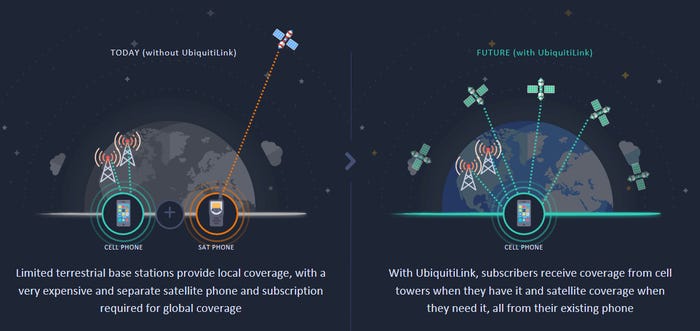Nanosatellites could be the answer to mobile not-spotsNanosatellites could be the answer to mobile not-spots
Start-up UbiquitiLink reckons it’s cracked the challenge of affordable satellite connectivity to regular handsets through the use of nanosatellites.
March 7, 2019

Start-up UbiquitiLink reckons it’s cracked the challenge of affordable satellite connectivity to regular handsets through the use of nanosatellites.
You can’t use traditional geostationary satellites to fill regular cellular coverage gaps because they’re too expensive and are positioned 35,000 km above the surface of the earth, which is way further than cellular signals are designed to go and introduces excessive lag to the signal. An obvious solution is to use satellites at a much lower orbit, but until now that hasn’t been economically viable.
UbiquitiLink reckons it has the answer to this conundrum and went to MWC last week to tell everyone all about it. We spoke to CEO Charles Miller to hear directly what’s so different about what his company’s doing, compared to the traditional satellite connectivity business.
A key development seems to be the evolution of the satellite business, of which Miller is a veteran. It’s apparently a lot cheaper to build a satellite these days, using off-the-shelf components and assembly lines. This makes the production of large numbers of smaller satellites – nanosatellites – relatively affordable for the first time.
The ideal altitude for a cellular satellite is around 500 km, it seems – 70 times closer to earth than a geostationary one. But at that height the area covered is much smaller, hence the need for more of them. The cost of launching these into space is apparently coming down rapidly too, thanks to billionaire entrepreneurs like Elon Musk and Jeff Bezos.
One more challenge is the fact that mobile phone protocol apparently never expects to have to transmit further than 35 km from a terrestrial base station thanks to the curvature of the earth. In order to be able to use regular protocols and spectrum, Miller said his company has developed some kind of hack that prevents your phone freaking out when it has to deal with much more lag than it’s expecting (although imperceptible to us mere humans, we’re told).
UbiquitiLink has already launched a bunch of these nanosatellites 500 km into space and is now ready fill those not-spots. Its business model is to sign roaming deals directly with MNOs, who will then offer the service to their punters when regular connectivity isn’t an option. At first it will just offer messaging, but move into data when things ramp up.
This seems like a pretty major undertaking that will need to generate a lot of business before it sees significant ROI. But we’re not aware of anyone else claiming to have cracked the satellite cellular connectivity market so Ubiquitilink seems to have first mover advantage and the total available market would appear to be pretty big. Here’s a diagram illustrating its proposition.

About the Author
You May Also Like










.png?width=300&auto=webp&quality=80&disable=upscale)


_1.jpg?width=300&auto=webp&quality=80&disable=upscale)